Difference between revisions of "DW-RGB03.A"
Jump to navigation
Jump to search
| (2 intermediate revisions by the same user not shown) | |||
| Line 47: | Line 47: | ||
==Module dimensions== | ==Module dimensions== | ||
| − | [[File:RGB03A DIM.png| | + | [[File:RGB03A DIM.png|500px]] |
==Internal layout== | ==Internal layout== | ||
| − | [[File:RGB03A IL.png| | + | [[File:RGB03A IL.png|300px]] |
==Connection of LED lamps and LED RGB== | ==Connection of LED lamps and LED RGB== | ||
| Line 90: | Line 90: | ||
==Indication of module operation== | ==Indication of module operation== | ||
| − | + | {{indicationold}} | |
| − | {{ | ||
| − | |||
| − | |||
| − | |||
| − | |||
| − | }} | ||
==Module installation and connection procedure== | ==Module installation and connection procedure== | ||
Latest revision as of 08:47, 9 August 2021
| DW-RGB03.A | |||||||
|---|---|---|---|---|---|---|---|
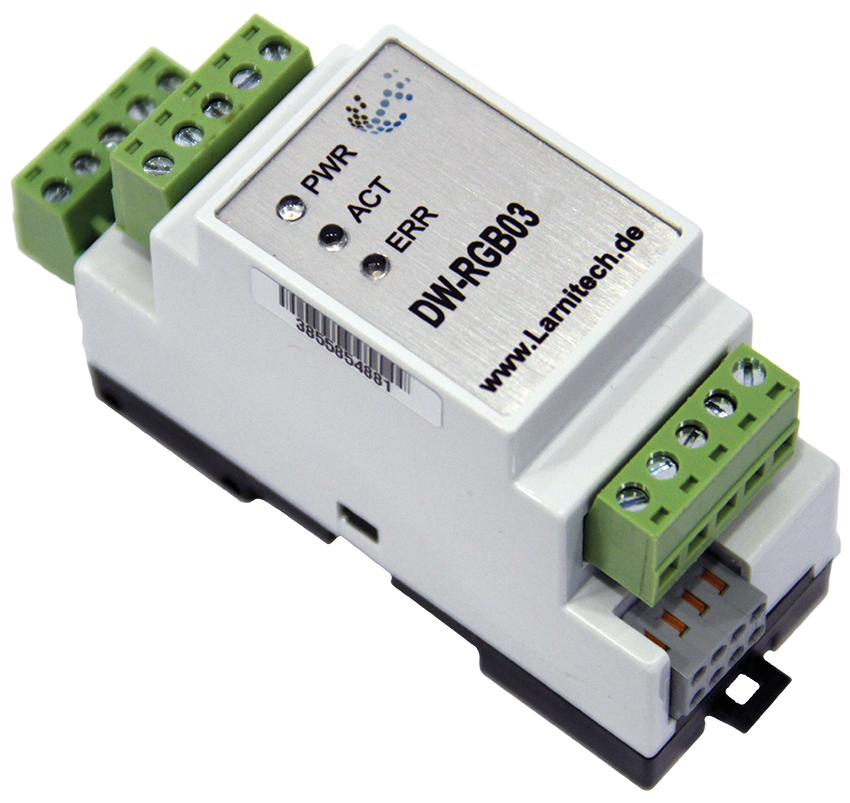 | |||||||
| |||||||
| |||||||
9-CHANNEL LED CONTROLLER
The module allows connecting RGB and monochrome LED strips.
Features
- Supported load types:
- 3x RGB
- 2x RGBW + 1 monochrome channels
- 1x RGBWW + 1x RGB or 4x monochrome channels
CAUTION! All work related to the installation, connection, setting up, service and support must be carried out by qualified personnel with sufficient skills and experience in working with electrical equipment. To avoid the risk of fire, electric shock, damage to the system and/or personal injury, the system installation and assembly must be performed in accordance with the instructions listed below:
- all connectivity work must be carried out with the power turned OFF;
- use appropriate tools and personal protection against electric shock;
- do not use damaged cables, wires and connectors;
- avoid folding the cables and wires;
- do not apply excessive force to the wires by kinking or pressing them too hard: the inner conductors of the cables and wires may get stripped or damaged;
- do not use the power socket with poor contacts to connect;
- do not exceed the load limit parameters specified in the manual;
- the supply conductors wire section is subject to the specifications for current density limit, insulation type and wire material. Light section can result in cable overheating and fire.
When the power is on, NEVER:
- connect/disconnect the connectors;
- open modules and sensors.
Overview
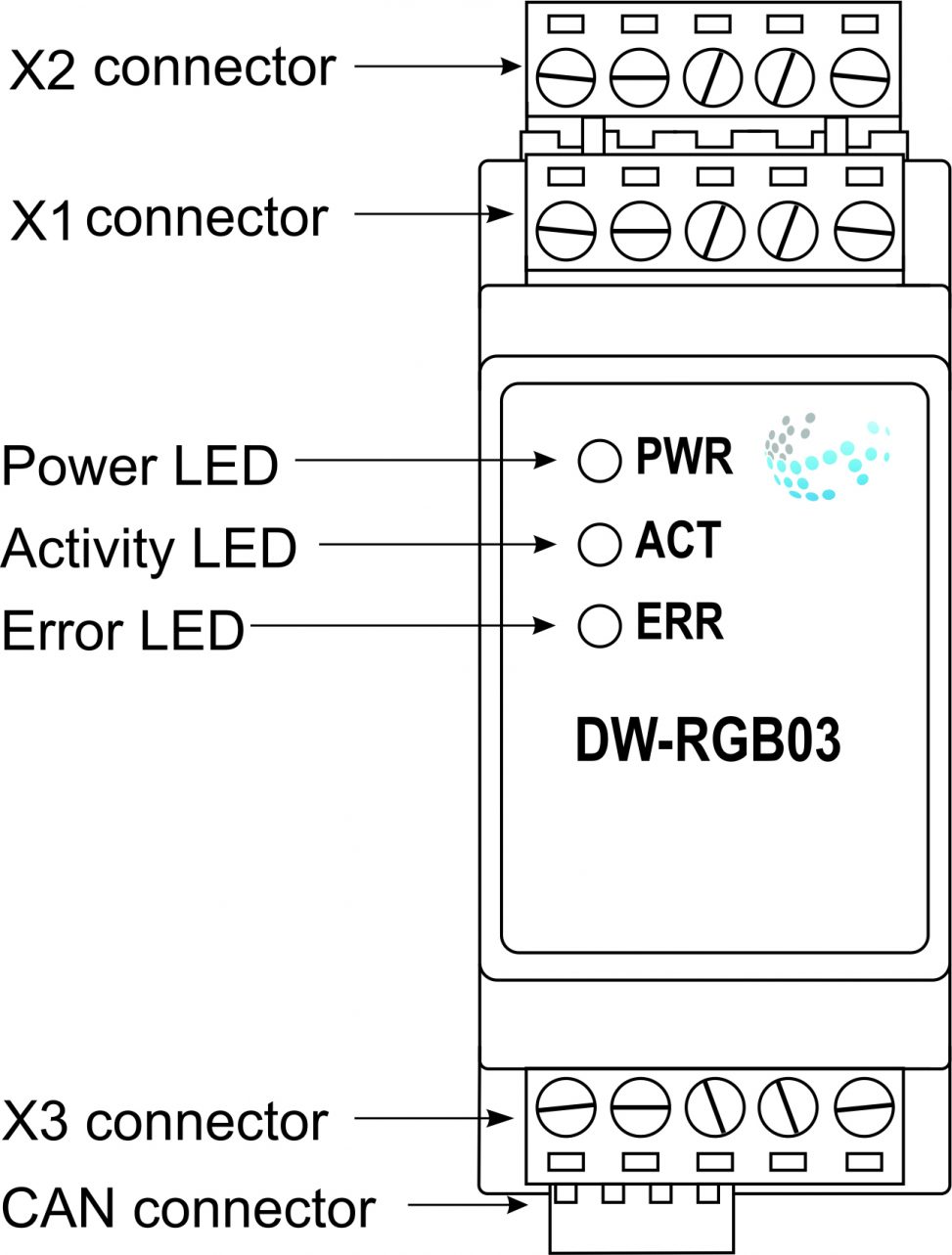
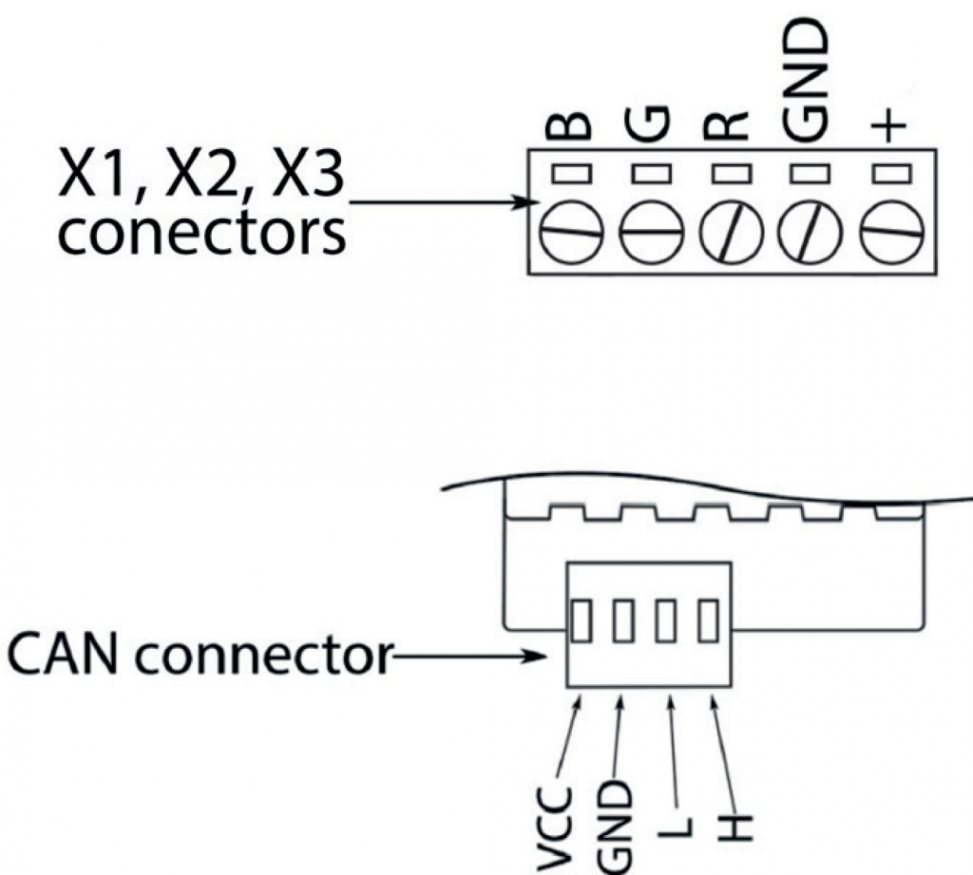
Module dimensions
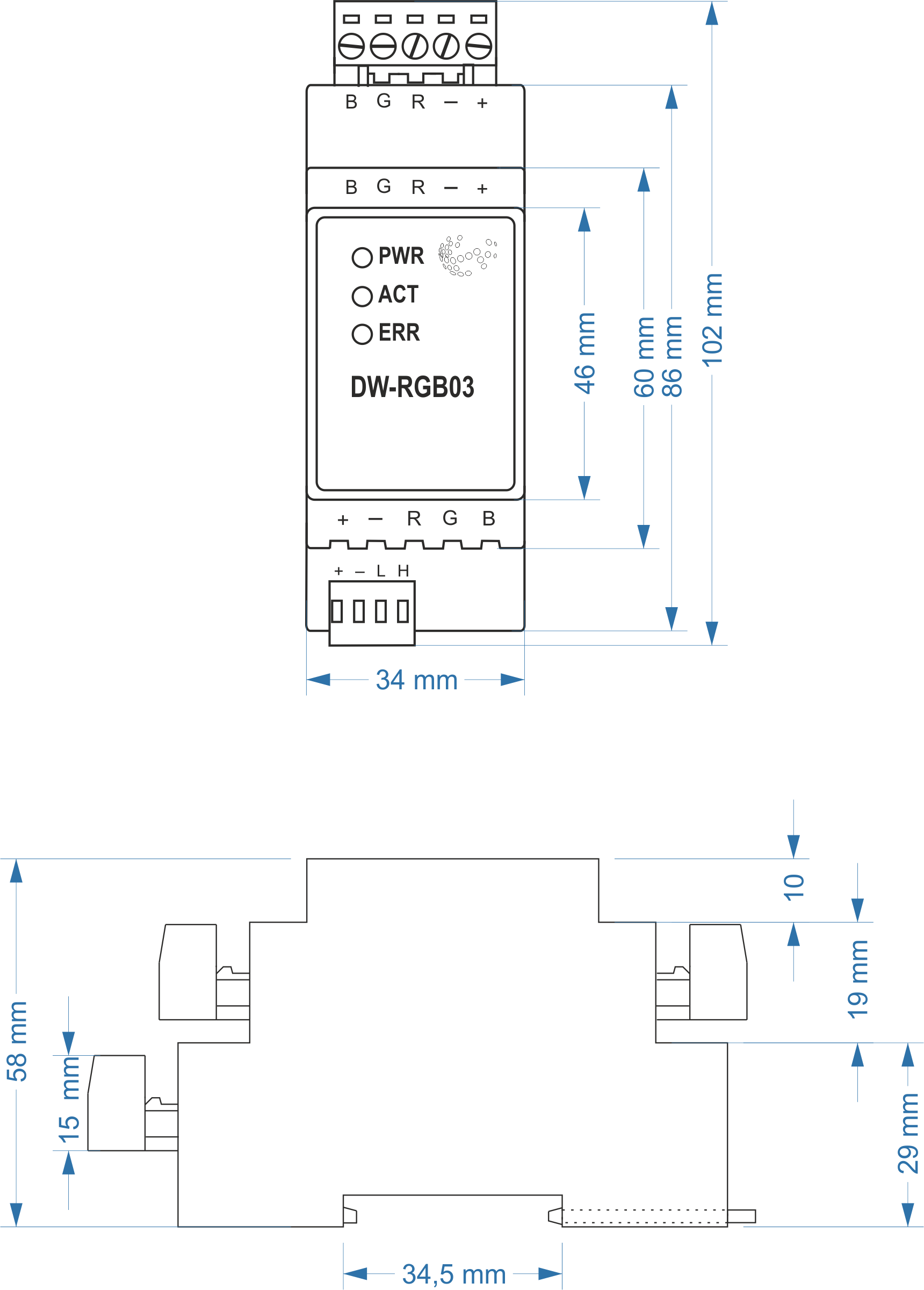
Internal layout
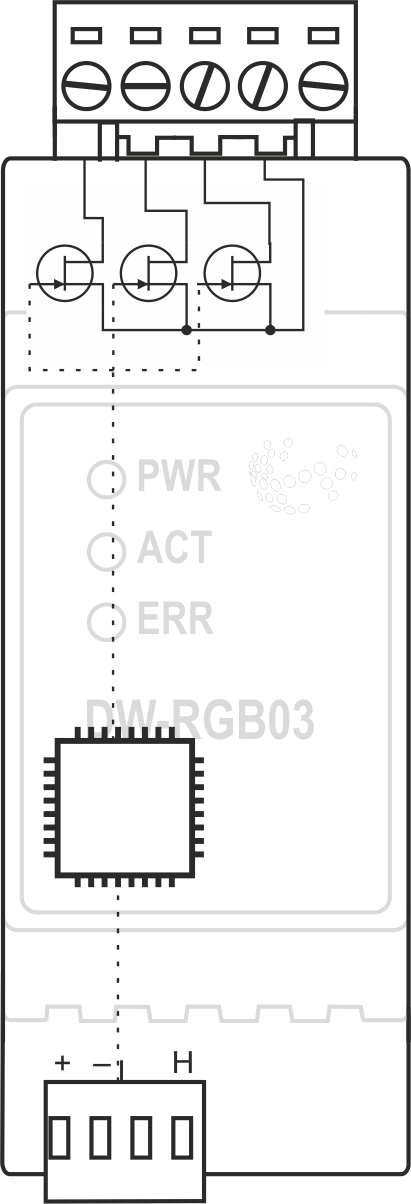
Connection of LED lamps and LED RGB
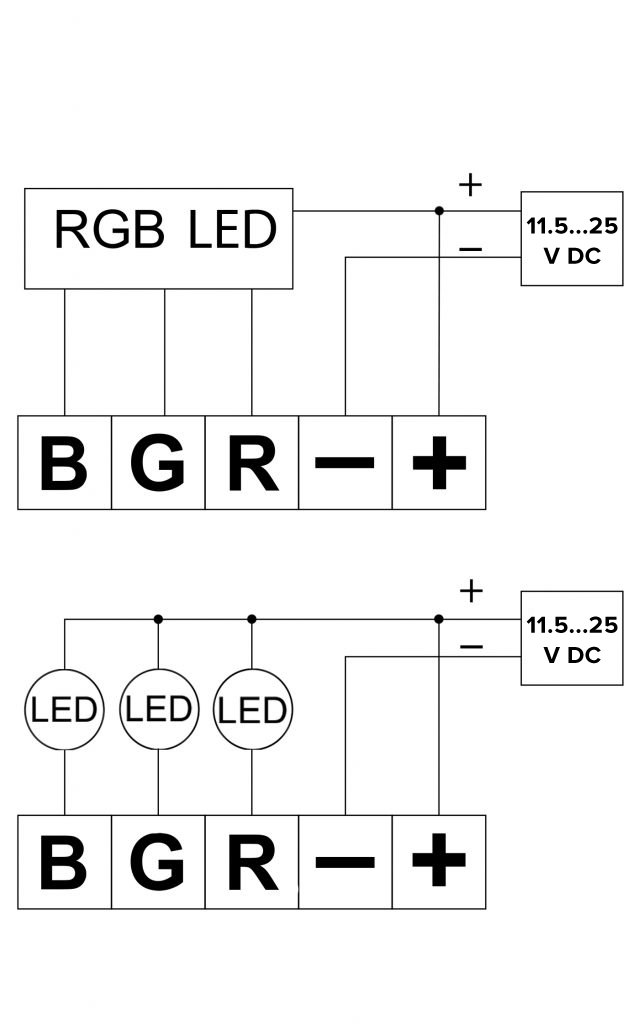
Example of connection RGBWW/RGBW LED
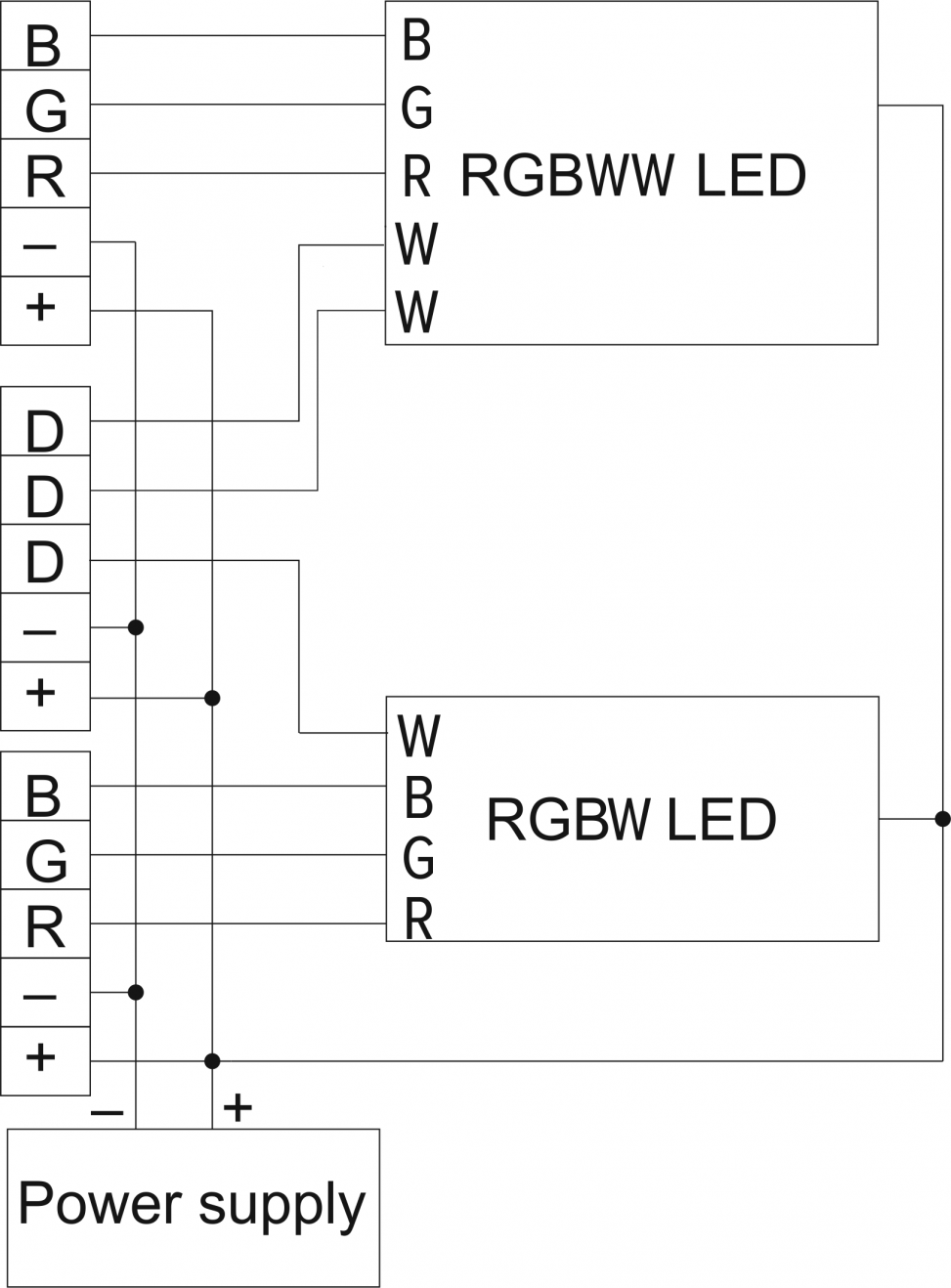
Example of connection RGB LED with Amp

Example of connection load with supply less than 12V
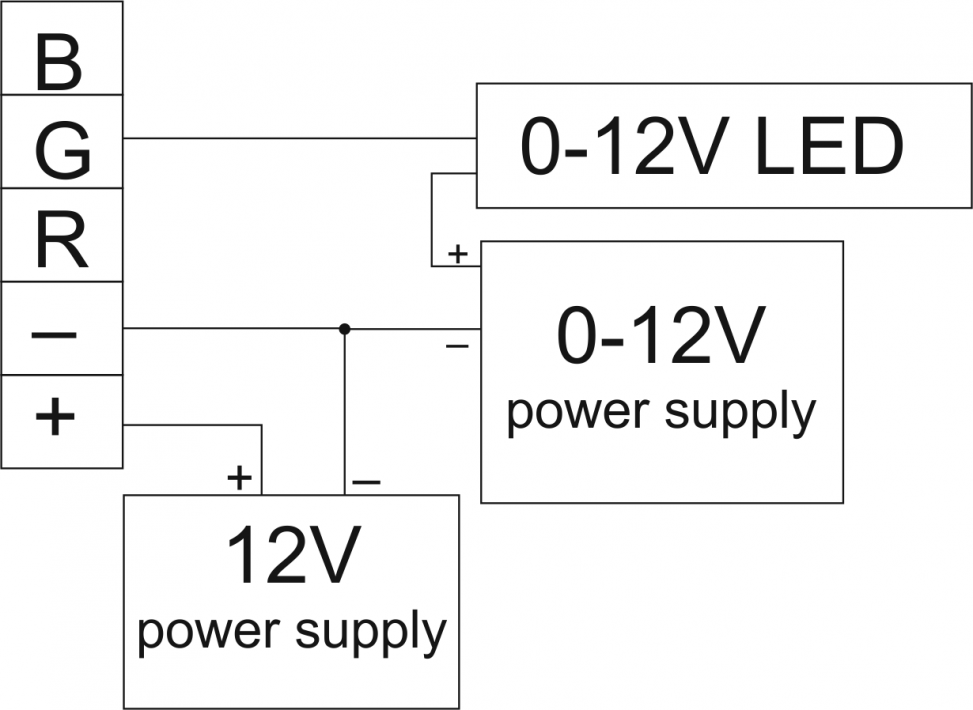
Module parameters
| Parameter name | Value |
|---|---|
| Output channels qty | 9 |
| Input voltage | 11.5...25V DC |
| Current type | DC |
| Adjustment type | PWM |
| Max load per channel | 3A (36W at 12V) |
| Max load per device | 15A (180W at 12V) |
| Power supply | 11.5 … 27.5 V DC from CAN |
| Max current(24V) | 55 mA |
| Bus type | CAN (4-wire) |
| Equipment installation type | DIN rail (EN 60715) |
| Case material | ABS |
| Protection | IP40 |
| Temperature range | -10 … +50 °C |
| Size | 2U, 35x102x58 mm |
| Weight | 85 g |
Indication of module operation
| Indicator | Status | Description |
|---|---|---|
| Power | Power | |
| Power not available | ||
| Activity | Data communication | |
| Data communication not available | ||
| Error | No errors | |
| Overheating | ||
| The data has not been transferred via the CAN bus for at least 5 minutes. |
Module installation and connection procedure
- Install the module in the switchboard on the DIN rail and fix it with the special latch on the module base.
- Connect the CAN connector.
- Connect the X1, X2, X3 connectors.
- Configure the module using LT setup.
- Apply power to the load.
- Check all equipment for proper operation.
Module shut-off and deinstallation procedure
- Disconnect the power from the load.
- Disconnect the X1, X2, X3 connectors.
- Disconnect the CAN connector.
- Remove the module from the DIN rail, releasing the latch at the bottom of the module base.
HW settings
| Name | Type, range | SUBID | Default | Description |
|---|---|---|---|---|
| dm | char[9] | 98 | 'RGBRGBRGB' | Each char is responsible for the type of a particular channel, RGB takes 3 channels
Example: dm='DDDRGBDDD' |
| def | integer 0-250 | 1-9 | 100 | The default brightness level in case of a power reset (1..250). Example: def=250 |
| min | integer 0-100 | 1-9 | 0 | Minimum dimming level, example: min=10 |
| max | integer 0-100 | 1-9 | 100 | Maximum dimming level, example max=95 |
| runtime | integer 0-100 | 1-9 | 5 | Runtime is the speed of changing the brightness(measured in seconds). Example: runtime=20 |
| f | double 0.5-24000 | 98 | 500 | It is frequency (measured in Hz); Example: f=500 |
1<item addr="555:1" auto-period="600" cfgid="66" name="Dimmer" type="dimer-lamp" uniq_id="4054"/>
2<item addr="555:2" auto-period="600" cfgid="66" name="Dimmer" type="dimer-lamp" uniq_id="4055"/>
3<item addr="555:3" auto-period="600" cfgid="66" name="Dimmer" type="dimer-lamp" uniq_id="4056"/>
4<item addr="555:4" auto-period="600" cfgid="66" name="RGB" type="rgb-lamp" uniq_id="4053"/>
5<item addr="555:7" auto-period="600" cfgid="66" name="Dimmer" type="dimer-lamp" uniq_id="4057"/>
6<item addr="555:8" auto-period="600" cfgid="66" name="Dimmer" type="dimer-lamp" uniq_id="4058"/>
7<item addr="555:9" auto-period="600" cfgid="66" name="Dimmer" type="dimer-lamp" uniq_id="4059"/>
8<item addr="555:97" cfgid="66" name="Temperature" system="yes" type="temperature-sensor" uniq_id="4010"/>
9<item addr="555:98" cfgid="66" hw="dm='DDDRGBDDD'" name="Temperature" system="yes" type="temperature-sensor" uniq_id="4011"/>